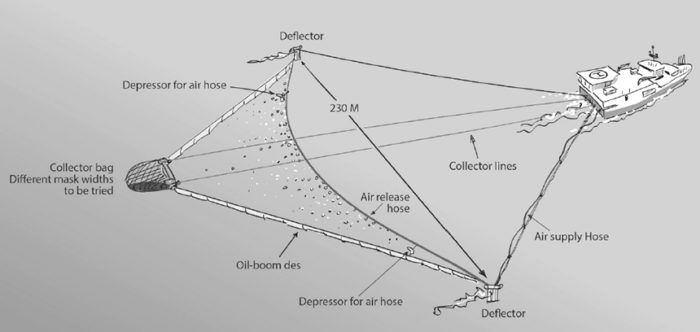Petroleum Geo-Services (PGS) launched a concept for collecting plastics at sea using seismic vessels. This project involves a single seismic vessel towing a boom and skirt arrangement with a bubble curtain that lifts plastic.
After conducting a feasibility study in 2018, PGS found that pelagic microplastic densities are too low for surface plastic collection to be efficient on the open ocean. However, densities may be higher in certain areas or during certain seasons, or during flush-out events.
[smlsubform prepend=”GET THE SAFETY4SEA IN YOUR INBOX!” showname=false emailtxt=”” emailholder=”Enter your email address” showsubmit=true submittxt=”Submit” jsthanks=false thankyou=”Thank you for subscribing to our mailing list”]
Namely, studies identified areas where plastic could be available in high densities, because of the likelihood of high input flows from runoff and rivers during wet seasons. These include the Gulf of Mexico, the Caribbean Sea and the West Coast of Africa around the north Atlantic Margin.
PGS is now developing a more detailed technical study to include theoretical engineering and hydrodynamics considerations.
This full-scale pilot would involve a single seismic vessel towing a boom and skirt arrangement with a bubble curtain that lifts plastic to the surface for collection in a permeable collection bag.
The pilot will be carried out offshore, over a period of about two months in either the Atlantic or the Caribbean. The purpose of the pilot will be to:
- Test the efficiency of the collection concept both offshore and near-shore;
- Conduct scientific research on the occurrence, density and characteristics of plastics in the ocean.

































































Nice & informative site and sharing this knowledgeable… keep it up …